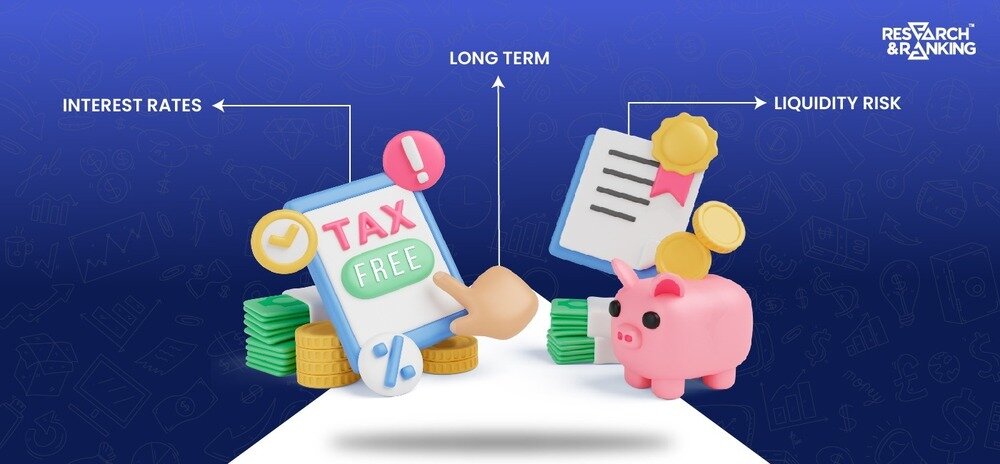In investment options, tax-free bonds stand out as a secure haven for those seeking stable returns without the burden of tax liabilities. Let’s delve into the intricacies of these bonds and understand why they are becoming an increasingly attractive choice for investors.
What Are Tax-Free Bonds?
Tax-free bonds are fixed-income securities issued by public undertakings, providing investors with interest income exempt from taxation. With a face value typically set at Rs. 1000, these bonds offer a stable return on investment, unaffected by fluctuations in the secondary market.
Features of Tax-Free Bonds
- Annual Interest Payouts: Investors enjoy annual interest payouts without any tax implications. This regular income stream and tax benefits make tax-free bonds an attractive proposition.
- Investment Tenure Options: Flexible investment tenures ranging from 10 to 20 years allow investors to align their choices with their financial goals and preferences.
- Trading Flexibility: Tax-free bonds can be traded based on market rates, allowing investors to capitalize on favorable market conditions.
- Physical and Dematerialized Holding: Investors can hold tax-free bonds in physical or dematerialized form, catering to their preferences and convenience.
Issuers of Tax-Free Bonds
Renowned entities like Power Finance Corporation, NTPC Limited, and Indian Railways Finance Corporation Limited issue tax-free bonds in India. Understanding the credibility of the issuer is crucial for risk-conscious investors.
Trading and Investment Options
Investors can trade tax-free bonds through a Demat account or in physical form. The option to apply online or offline adds flexibility to the investment process. However, selling bonds in the secondary market may attract capital gains tax.
Interest Rate Dynamics
The interest rate on tax-free bonds remains fixed based on the face value, ensuring a predetermined annual return for investors. Despite fluctuations in the secondary market, the interest income remains constant, making them a reliable choice.
Bond Tenure Importance
The tenure of tax-free bonds, ranging from 10 to 20 years, plays a pivotal role in determining returns. Investors holding bonds until maturity receive the entire principal amount, highlighting the long-term commitment associated with these instruments.
Advantages of Tax-Free Bonds
- Safety of Investment: Tax-free bonds offer a high level of safety, minimizing the risk of default in interest payments and principal repayment as government entities back them. Despite the low risk, these bonds provide relatively higher yields than other fixed-income options.
- Tax-Free Interest Income: One of the primary advantages is the tax-free nature of the interest earned. Investors in higher tax brackets find tax-free bonds more appealing than taxable alternatives, as they shield earned interest from tax deductions.
- Liquidity and Secondary Market Trading: Investors can liquidate their investments by selling tax-free bonds in the secondary market, capitalizing on market fluctuations. This flexibility adds another layer of attractiveness for those looking to optimize returns.
How Do Tax-Free Bonds Work?
- Purpose and Issuing Entities: Government entities issue tax-free bonds to raise funds for specific capital expenditures. The issuance remains open for a short period, during which investors can subscribe to purchase these bonds.
- Subscription Process: Tax-free bonds offer fixed interest rates determined by prevailing yields, credit ratings, and investor qualifications like other bonds. Retail investors and high-net-worth individuals (HNIs) are categorized based on their investment amounts.
- Tenure and Maturity Redemption: With 10, 15, or 20 years, investors can redeem tax-free bonds at maturity. The option to buy and sell in the secondary market exists, with profits taxed differently based on the holding period.
Ideal Investors for Tax-Free Bonds
- Long-Term Investors: Given their extended tenure, tax-free bonds are ideal for long-term investors seeking stable income over an extended period.
- Low-Risk Profile: Investors with a low-risk appetite find tax-free bonds attractive due to their safety and government backing, minimizing default risks.
- Consideration for Senior Citizens: Senior citizens aiming for a secure income in their retirement years may find tax-free bonds suitable for their investment needs.
Redeeming Tax-Free Bonds
While tax-free bonds cannot be redeemed before maturity, they can be sold in the secondary market. Investors must be mindful of capital gains tax if they sell before maturity.
Issuers of Tax-Free Bonds
Only government-backed PSUs have the authority to issue tax-free bonds. However, not all bonds issued by these entities fall under the tax-exempt category. Recognized entities such as Power Finance Corporation, NTPC Limited, and Indian Railways Finance Corporation Limited are among India’s common issuers of tax-free bonds.
Income Tax Exemption for Tax-Free Bonds
Tax-free bonds qualify for exemption under Section 10(15) of the Income Tax Act, providing investors with a shield against tax obligations. Not all bonds issued by government-backed PSUs enjoy tax exemption. Identifying specific issues that fall under this exemption for a tax-efficient investment strategy is essential.
Investors holding tax-free bonds until maturity enjoy complete exemption from taxes on interest income, providing a significant tax advantage. Capital gains tax applies if a tax-free bond is sold before maturity. The holding period determines the taxation rate, emphasizing the importance of a strategic investment horizon.
Risks Associated with Tax-Free Bonds
Credit Default Risk: While tax-free bonds are generally safe from credit default risk, liquidity, and interest rate risks remain potential concerns, mainly if sold before maturity.
Liquidity and Interest Rate Risks: The liquidity of tax-free bonds may be lower due to their extended tenure. Additionally, interest rate fluctuations can impact bond values, highlighting the importance of holding bonds until maturity.
Advantages of Investing in Tax-Free Bonds
- Tax-Free Regular Income: Investing in tax-free bonds provides investors with a regular, tax-free income stream, ensuring financial stability and predictable returns.
- Safety Assurance: Backed by public undertakings or the government, tax-free bonds offer a high level of safety, making them a preferred choice for risk-averse investors.
- Trading Ease and Profit Potential: Listed on the stock exchange, tax-free bonds offer ease of trading and profit potential when market prices appreciate.
- Higher Returns for High Tax Brackets: Investors in higher tax brackets stand to gain more from tax-free bonds, making them an attractive option for wealth maximization.
Identifying the Best Tax-Free Bonds
When seeking the best tax-free bonds to make informed investment decisions, you must carefully evaluate issuer profiles, yield to maturity, and maturity dates.
- Issuer Profile: Understanding the reputation and financial stability of the issuer is crucial for assessing the safety and reliability of tax-free bonds.
- Yield to Maturity: The Yield to Maturity of a bond provides insights into the total returns an investor can expect over the bond’s entire tenure, helping make informed investment choices.
- Maturity Date: Remember the maturity date to avoid early liquidation and exposure to liquidity and interest rate risks.
In conclusion, tax-free bonds offer a unique investment avenue, combining safety, tax benefits, and the potential for stable returns. While they may not be suitable for all investors, those seeking long-term stability and tax advantages should consider adding tax-free bonds to their investment portfolio.
Know more about JOYALUKKAS INDIA IPO
FAQs
Can tax-free bonds be redeemed before maturity?
Tax-free bonds cannot be redeemed before maturity but can be sold in the secondary market.
What tax benefits do investors enjoy with tax-free bonds?
Investors hold tax-free bonds until maturity and pay no tax on interest income.
What are the risks associated with tax-free bonds?
Risks include liquidity, interest rate, and potential capital gains tax on early sale.
How do you identify the best tax-free bonds in the market?
Consider issuer profile, Yield to Maturity, and maturity date for informed decision-making.
Why did the government stop issuing tax-free bonds?
The government wanted to attract investors to invest in the bonds of some critical PSUs, so it issued tax-free bonds. However, as the bond market matured, the government no longer needed to attract investors to invest in the bonds of these important companies.
How are tax-free bonds different from capital gains bonds?
Tax-free bonds don’t attract tax, while capital gains bonds help investors save long-term capital gains tax arising from the sale of a capital asset (property/land)
Are tax-free bonds corporate bonds?
Yes, tax-free bonds are corporate bonds issued by specific Public Sector Units.
How useful was this post?
Click on a star to rate it!
Average rating 5 / 5. Vote count: 1
No votes so far! Be the first to rate this post.
I’m Archana R. Chettiar, an experienced content creator with
an affinity for writing on personal finance and other financial content. I
love to write on equity investing, retirement, managing money, and more.
- Archana Chettiar













